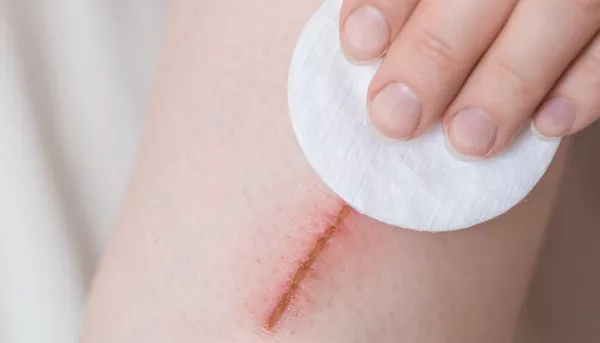Scars, whether from surgery, injury, or acne, can be a source of self-consciousness and discomfort for many individuals. While scars are a natural part of the skin’s healing process, their appearance can vary widely depending on factors such as skin type, depth of the wound, and proper wound care. If you’re looking to lighten your scars and improve their appearance, there are several strategies and treatments available that can help. In this comprehensive guide, we’ll explore effective methods for lightening scars, from topical treatments to medical procedures, to help you achieve smoother, more radiant skin.
Understanding Scars: A Closer Look
Before delving into scar lightening techniques, it’s important to understand the different types of scars and how they form. Scars are a result of the body’s natural healing process following an injury, surgery, or skin condition. When the skin is wounded, the body produces collagen fibers to repair the damaged tissue, leading to the formation of scar tissue.
Types of Scars
Hypertrophic Scars: These scars are raised, red, and may be itchy or uncomfortable. They occur when the body produces too much collagen during the healing process.
Keloid Scars: Keloids are thick, raised scars that extend beyond the boundaries of the original wound. They are more common in individuals with darker skin tones and may be genetic.
Atrophic Scars: Atrophic scars are indented or depressed scars that result from the loss of underlying tissue. They are often seen in conditions such as acne or chickenpox.
Factors Influencing Scar Formation
Several factors can influence the formation and appearance of scars, including:
Genetics: Some individuals may be predisposed to developing keloid or hypertrophic scars due to genetic factors.
Wound Care: Proper wound care, including keeping the wound clean and protected, can help minimize scar formation.
Skin Type: People with darker skin tones may be more prone to developing hyperpigmented scars, while those with lighter skin tones may experience more noticeable redness or discoloration.
Age: Younger individuals tend to heal more quickly and may experience less noticeable scarring compared to older individuals.
Strategies for Lightening Scars
While scars cannot be completely erased, there are several strategies and treatments available that can help improve their appearance and reduce their visibility. From topical creams to laser therapy, finding the right approach for your scars depends on factors such as scar type, size, and location.
1. Topical Treatments
Topical treatments, such as creams, gels, and ointments, can help lighten scars and improve their texture over time. Some common ingredients found in scar lightening creams include:
Vitamin E: Vitamin E is known for its antioxidant properties and may help promote skin healing and reduce inflammation.
Hyaluronic Acid: Hyaluronic acid is a natural substance found in the skin that helps retain moisture and promote collagen production, leading to smoother, more hydrated skin.
Silicone Gel or Sheets: Silicone gel or sheets create a protective barrier over the scar, helping to reduce redness, flatten raised scars, and improve overall texture.
2. Chemical Peels
Chemical peels involve the application of a chemical solution to the skin, which exfoliates the top layer of dead skin cells and stimulates collagen production. This can help improve the appearance of scars by promoting cell turnover and reducing hyperpigmentation.
3. Microdermabrasion
Microdermabrasion is a non-invasive procedure that uses a special tool to gently exfoliate the skin, removing the top layer of dead skin cells and stimulating collagen production. This can help improve the texture and appearance of scars over time.
4. Laser Therapy
Laser therapy is a popular treatment option for lightening scars, particularly for hypertrophic or keloid scars. Various types of lasers can be used to target different aspects of scar tissue, such as redness, texture, and pigmentation. Laser therapy works by breaking down scar tissue and stimulating collagen production, leading to smoother, more even-toned skin.
5. Steroid Injections
For hypertrophic or keloid scars, steroid injections may be recommended to help reduce inflammation and flatten raised scar tissue. Steroid injections work by suppressing the body’s immune response and reducing the production of collagen in the scar tissue.
6. Surgical Revision
In some cases, surgical revision may be necessary to improve the appearance of scars, particularly for large or deep scars. Surgical techniques such as excision, dermabrasion, or skin grafting may be used to remove or reshape scar tissue and improve the overall aesthetic outcome.
Preventing Scars: Tips for Wound Care
While it’s not always possible to prevent scars from forming, taking proper care of wounds can help minimize their appearance and promote more effective healing. Here are some tips for preventing scars:
Keep the Wound Clean:
Cleanse the wound gently with mild soap and water to remove dirt and bacteria, then apply an antiseptic ointment and cover with a sterile bandage.
Avoid Picking or Scratching: Resist the urge to pick at scabs or scratch at healing wounds, as this can disrupt the healing process and increase the risk of scarring.
Protect from Sun Exposure: Exposure to sunlight can cause scars to darken and become more noticeable. Protect healing wounds from sun exposure by covering them with clothing or applying a broad-spectrum sunscreen with SPF 30 or higher.
Stay Hydrated: Drink plenty of water to keep the skin hydrated and promote optimal wound healing.
Eat a Healthy Diet: Consuming a balanced diet rich in vitamins, minerals, and antioxidants can support skin health and promote faster healing.
Conclusion: Embracing Radiant Skin
While scars are a natural part of the skin’s healing process, there are effective strategies and treatments available that can help lighten their appearance and improve overall skin texture. Whether you choose topical treatments, laser therapy, or surgical revision, finding the right approach for your scars depends on factors such as scar type, size, and location. By taking proactive steps to care for your skin and seeking professional guidance when needed, you can embrace smoother, more radiant skin and feel more confident in your appearance. So, embrace the journey to lighter scars, and let your radiant skin shine bright.
[inline_related_posts title=”You Might Be Interested In” title_align=”left” style=”list” number=”6″ align=”none” ids=”6462,6172,6169″ by=”categories” orderby=”rand” order=”DESC” hide_thumb=”no” thumb_right=”no” views=”no” date=”yes” grid_columns=”2″ post_type=”” tax=””]
































